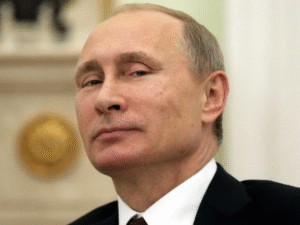$OIL $CL_F $BRN_F
#SaudiArabia #Russia #OilMarket #Asia #CrudeOil #OilExports #China #India #SaudiOil #Energy #OilPrices #GlobalTrade
Saudi Arabia has regained some of its oil market share in Asia, a vital region for global energy demand, as its crude exports increased in November. The Kingdom’s supply to Asia rose by 550,000 barrels per day (bpd) during the month, reflecting a significant recovery in demand for its oil. Key factors contributing to this rise include recovering refining margins in Asian markets, a reduced premium of the Dubai benchmark to Russia’s Urals, and higher transportation costs for Russian crude oil. This improvement in Saudi exports comes amid a backdrop of geopolitical shifts, Western sanctions on Moscow, and trading patterns heavily influenced by global price differentials. Saudi Arabia, with its ample production capabilities and resilient market strategies, continues to secure its foothold in a highly competitive oil market.
Russia, which had previously seized considerable market share in Asia, saw a decline in its crude oil exports to the region in November. Specifically, purchases by Moscow’s two largest oil buyers in the region—China and India—slowed, impacting overall export volumes. Chinese refineries, which have been increasingly accessing cheaper Urals crude from Russia due to discounted prices following Western sanctions, are now facing heightened shipping costs and significantly reduced price advantages. Indian refiners, too, adjusted their buying strategies, diverting purchases from Russia in light of narrowing price gaps. Consequently, Saudi Arabia was able to reassert its dominance in the region, exploiting the shifting dynamics in oil trade flows to its advantage.
Rising shipping costs for Russian crude oil appear to have imposed further constraints on its market share. Sanctions and the G7-imposed price cap have disrupted Russian trade routes, compelling its oil to travel longer distances to circumnavigate restrictions. For instance, transporting crude from Russia to key Asian hubs like China now entails more expensive logistics, increasing the landed costs of its oil. In comparison, Saudi Arabia, which operates with existing and reliable shipping infrastructure, benefits from lower delivery expenses. Additionally, the recent decline in the premium of Dubai benchmark oil against the Urals has further incentivized Asian refiners to reconsider their sourcing strategies, with Saudi supply offering better comparability in terms of price and quality.
The broader economic implications of Saudi Arabia’s regained market share extend beyond energy markets. Rising Saudi sales solidify its economic position as one of the leading global oil exporters, aiding the Kingdom’s revenue streams and supporting its Vision 2030 diversification agenda. Conversely, the drop in Russian exports marks another economic setback for Moscow, which is already grappling with the fiscal challenges of war-related spending and sanctions. For Asian refiners, this shift in oil flows bolsters their ability to secure reliable energy supplies, though global oil prices could remain volatile depending on geopolitical developments and OPEC+ decisions. Market watchers will continue to monitor the brewing competition between Russia and Saudi Arabia for dominance in Asia to decipher its long-term impact on crude benchmarks like Brent and West Texas Intermediate (WTI).







Comments are closed.